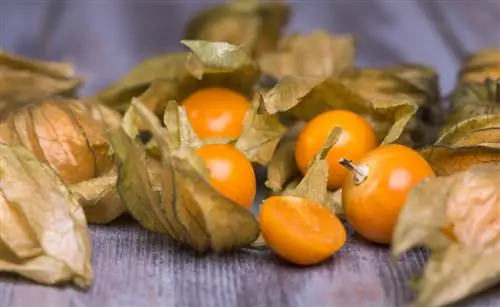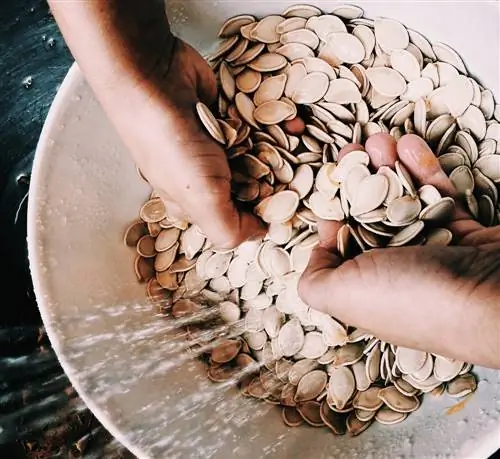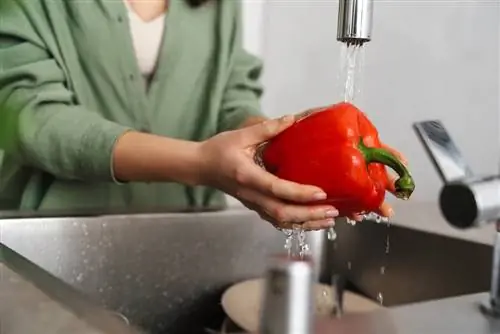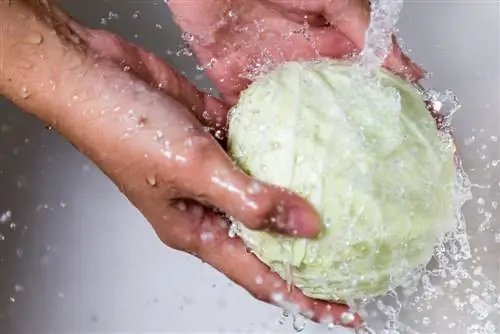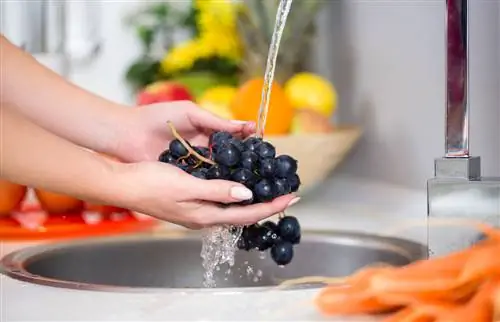- Author admin [email protected].
- Public 2023-12-16 16:46.
- Last modified 2025-01-23 11:20.
Physalis, which is actually botanically correctly called Physalis peruviana (Andean berry) or Physalis pruinosa (pineapple cherry), is a delicious and very he althy fruit. You can get them in German supermarkets all year round, although the fruits are imported primarily from South America in summer and autumn and from South Africa in winter and spring. The berries, which are about the size of a cherry, have a strong orange-red color and a slightly sour taste when ripe. They are also surrounded by a kind of lantern (hence the nickname lantern fruit). Opinions differ on the question of whether Physalis need to be washed or not.
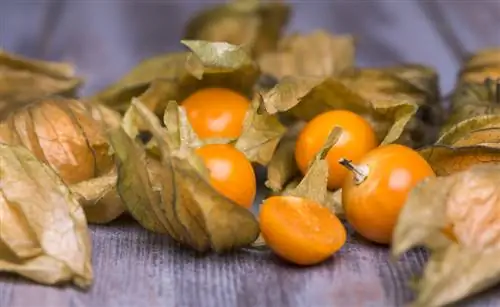
Should you wash physalis before eating?
Physalis should be washed before consumption, especially if purchased. Carefully remove the lantern cover, rinse the fruit under warm running water and then enjoy. Even harvested physalis from your own garden can be eaten directly without any concerns.
It's better to wash purchased physalis
First of all: Not every physalis is edible. “Physalis” is actually just the generic name for a group of nightshade plants, some of which are poisonous and some of which are really tasty. However, Andean berries are typically sold in supermarkets under the name “Physalis”. Some of these are also known as “Cape gooseberries”. Depending on the season, fruits available in supermarkets mostly come from South America (especiallya. Colombia) or South Africa. There the berries are grown commercially using pesticides. For this reason, you should always wash purchased Physalis, even if, according to information from the Ökotest Foundation, the pesticide contamination of the popular berry fruit has not yet been noticeable. By the way, the sticky, oily layer is typical of the Andean berry and is no indication of pesticide residues.
Wash Physalis properly
- Carefully remove the dry lantern cover.
- If necessary, you can cut them off at the base of the fruit with nail scissors.
- Now rinse the fruit thoroughly under running warm water.
- If you want to wash a lot of berries, simply place them in a sieve without the shell and rinse them in it.
Physalis you harvest yourself do not need to be washed
Unlike purchased fruits, you don't necessarily have to wash Andean berries from your own garden. The berries have a more or less pronounced adhesive layer. This is not poisonous and can be eaten without hesitation. However, this layer can taste slightly bitter, which some people don't like. In this case, washing off is advisable. Otherwise, you can safely eat your Physalis directly from the bush - only the covering should be removed before consumption.
How do you recognize ripe Physalis?
Although you can eat the sticky layer of the physalis, it is better to leave the green Andean berries hanging on the bush. The fruits belong to the nightshade family and are therefore poisonous when green. However, the berries are really ripe and therefore edible when they have a rich orange-red color and the surrounding shell looks brown and dried out. By the way, the fruits of the lantern flower, which is also native to this country, are not edible.
Tips & Tricks
The South American tomatillo also belongs to the Physalis family. The green fruit is traditionally processed as a vegetable and is the basis for every decent Mexican salsa.

